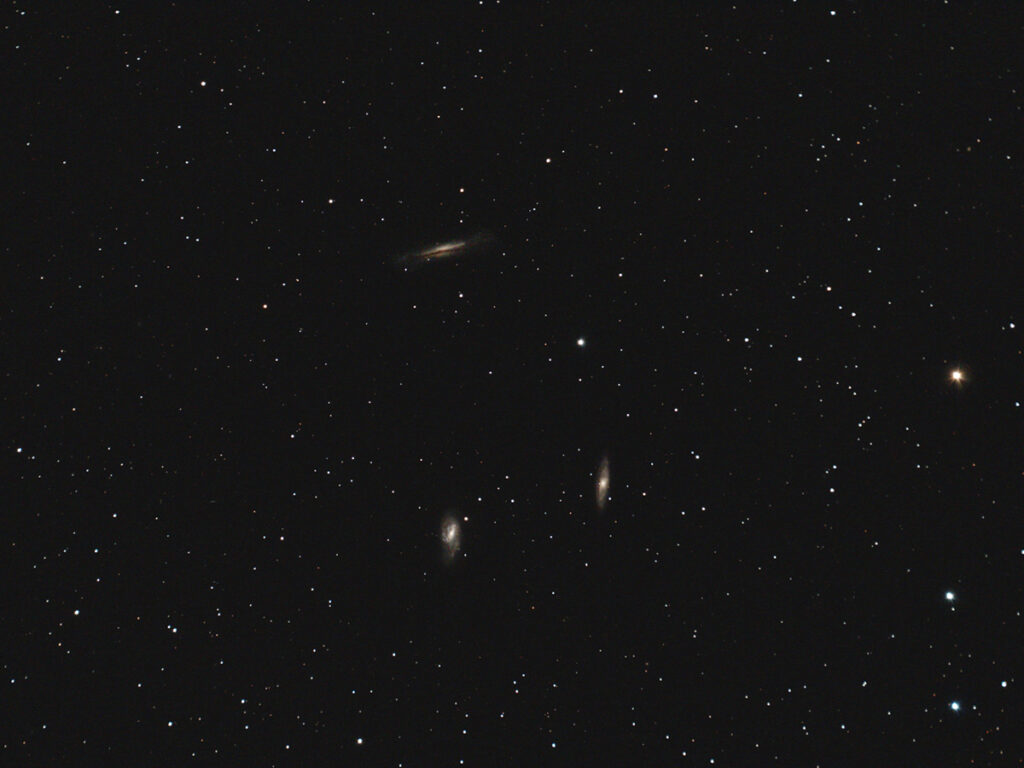
Telescope: Meade SN6 Comet Tracker at f/3.6, Orion Atlas EQ-G
Camera: Full Spectrum Modified Nikon D5300, Baader Mk III MPCC
Filter: Orion Imaging Skyglow Filter
Guide scope: Orion 50mm, ZWO ASI120MM mini
Exposure: 95x60sec, ISO 200, saved as RAW
Darks: Internal (Long Exposure Noise Reduction On)
Flats: 32×1/10sec, Tee shirt flats taken at dusk
Average Light Pollution: Red zone, Bortle 8, poor transparency, bright moonlight
Lensed Sky Quality Meter: 18.0 mag/arc-sec^2
Stacking: Mean with a 2-sigma clip.
White Balance: Nebulosity Automatic
Software: Backyard Nikon, Deep Sky Stacker, Nebulosity, Photoshop
M65 (right) and M66 (left) along with NGC 3628 (top) form a group known as the Leo Trio. These three actually form a gravitationally bound subgroup of the Leo I galaxy cluster. The warped shape of NGC 3628 is a result of interactions with M65 and 66. Visually, M65 and M66 are fairly easy to spot in modest sized telescopes, while NGC 3628 is much fainter due to the dust lying along the galactic plane. With a larger scope NGC 3628’s dust lane shows some wonderful detail.
The Leo Trio rises in the northeast a hour or so after sunset and is high overhead after midnight.
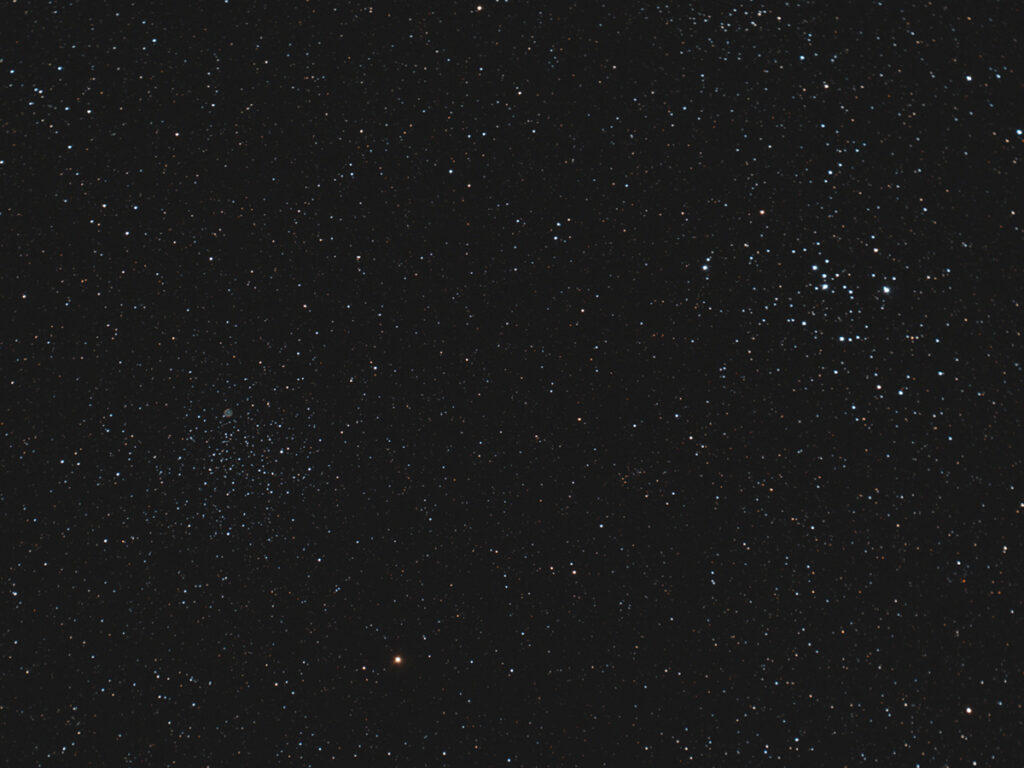
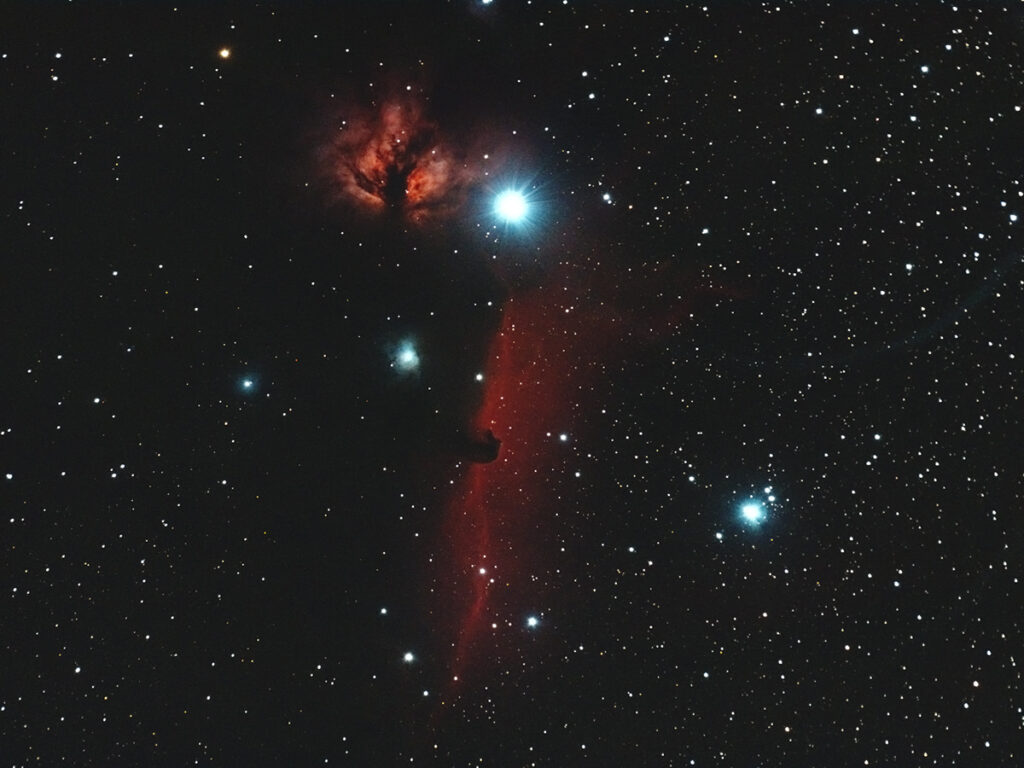
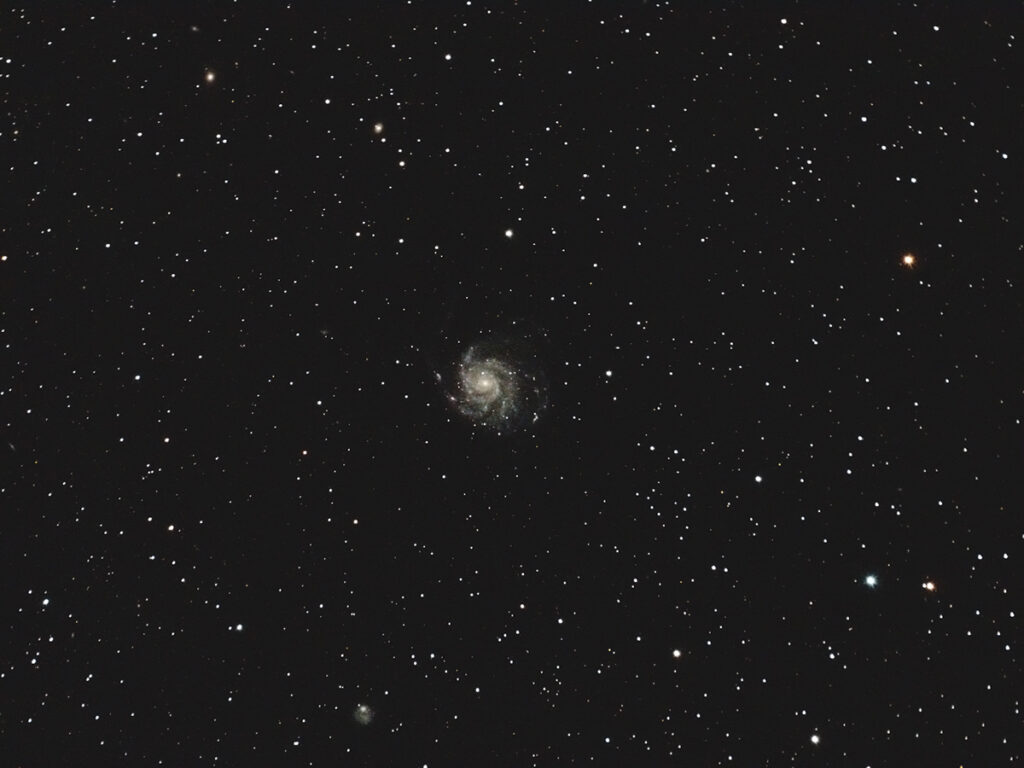

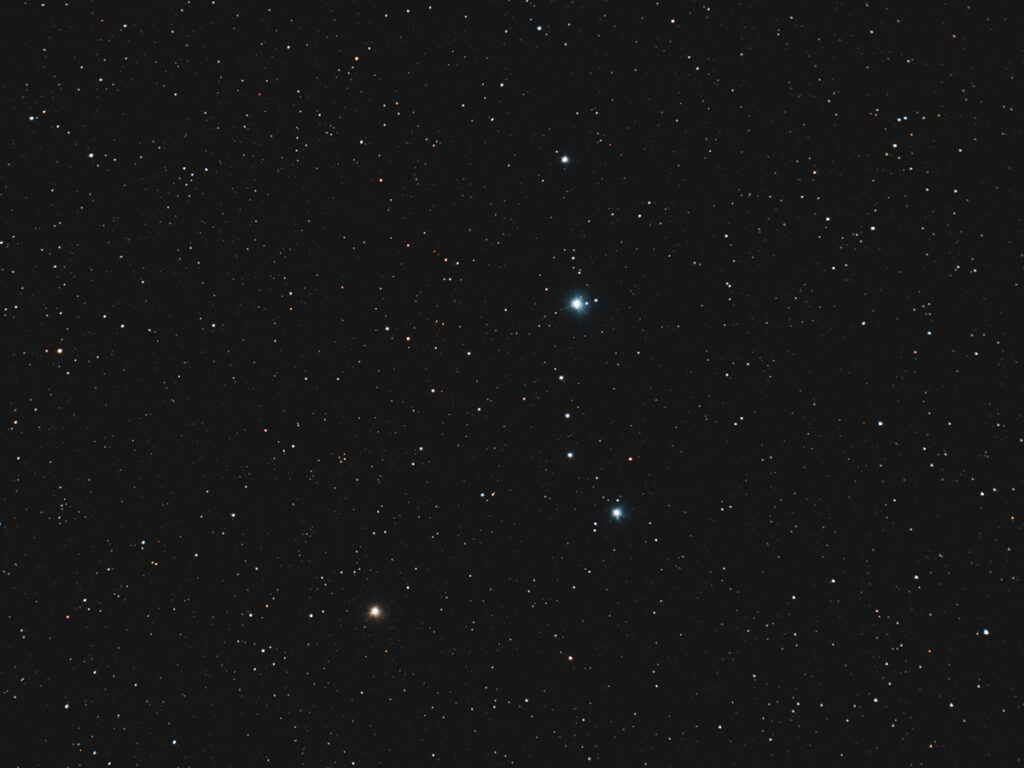
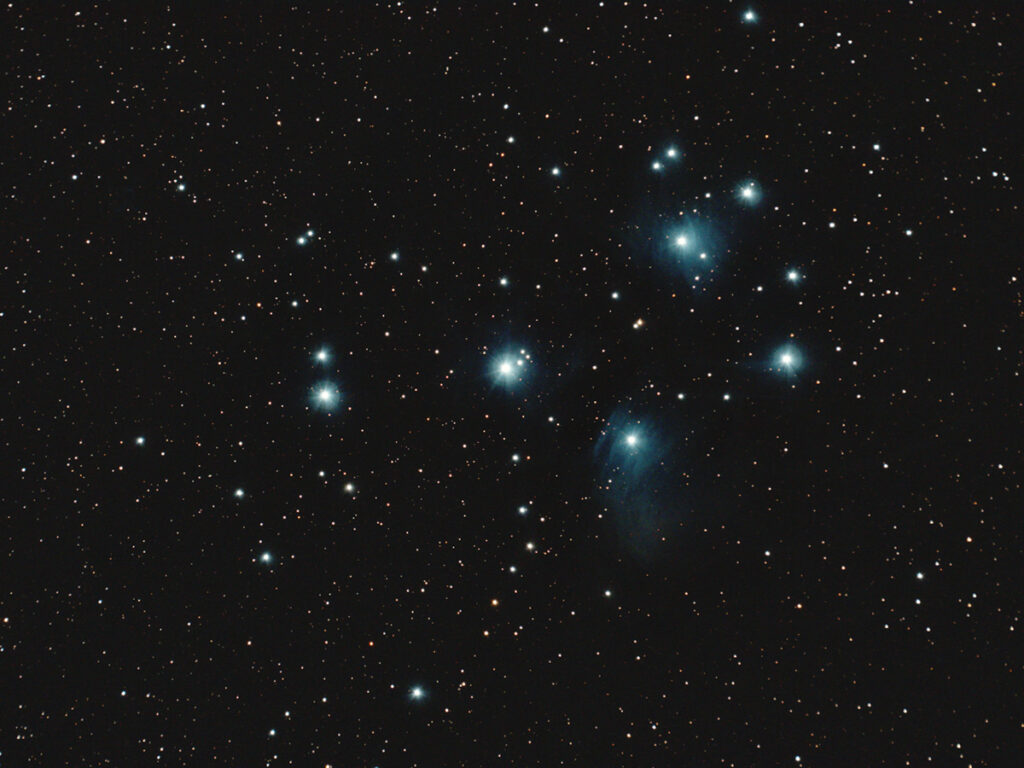
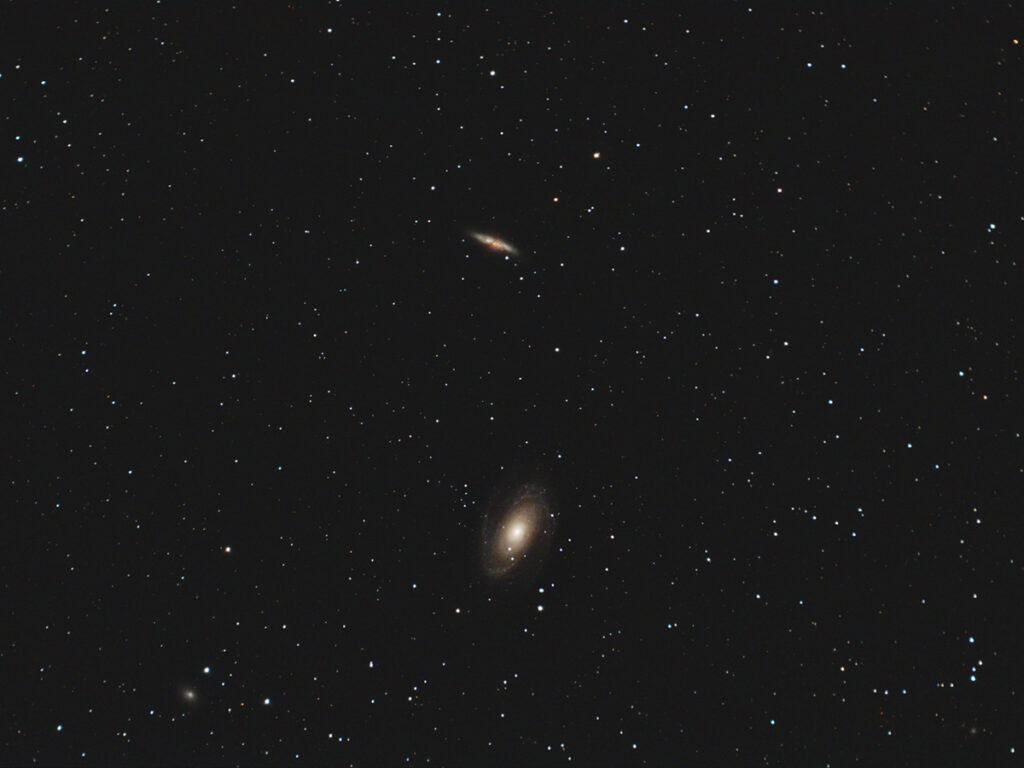

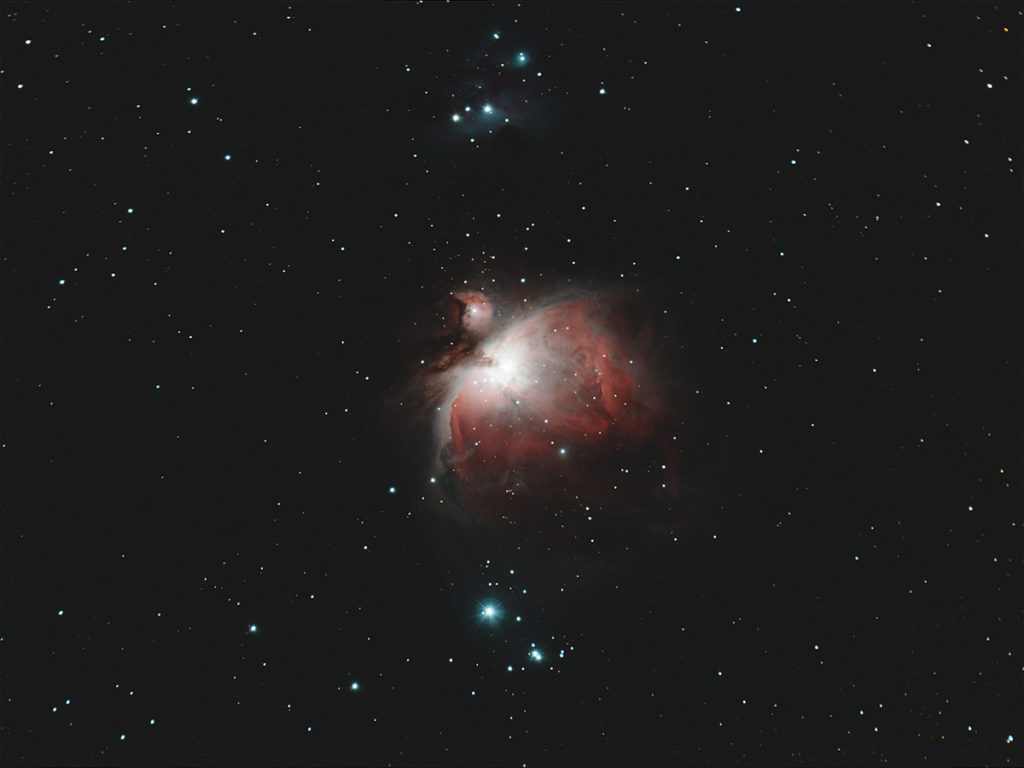
Recent Comments